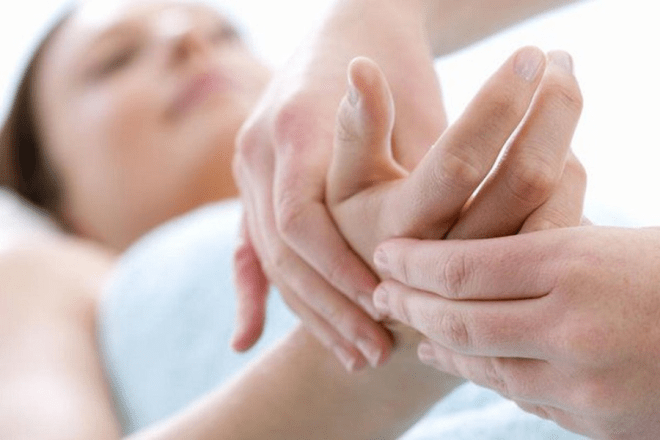Quintessential Guide to Dupuytren’s Contracture | Viking Hand

An overview
The palm of your hand comprises palmar fascia (a deep layer of tissue) that spreads across the palm to your fingers. Dupuytren’s Contracture Viking hand is the thickening and shortening of the web of fascia that causes clawing of the fingers. Moreover, it generally occurs bilaterally, which means, it affects one hand more drastically than the other
Symptoms of Dupuytren’s Contracture
- A nodule occurs on the palm, usually close to the base of your ring or little finger.
- Besides, the skin of the palm gets puckers.
- Clicking or popping sensation while you use your fingers.
- Facing difficulty to straighten your finger to get a glove on.
- Fingers become stiff, particularly in the morning.
- Hands become tender and itchy, and troubles with mobility.
- Plantar fascia indicates a more severe disease (Ledderhose disease).
- The formation of the thickened cord running along the palm to the fingers.
- It tightens your finger against the palm.
- The knuckle pads over the PIP joints may be tender.
Different phases of Dupuytren’s Contracture
- Proliferative
During this phase, myofibroblasts and the nodule start developing. In the early symptoms, few patients may report tenderness and discomfort regarding the nodules. The pain occurs because of the fixed nerve fibers along with the fibrous tissue or compression of the local nerve.
- Involution
In this phase of Dupuytren’s Contracture and Vikings, myofibroblasts develop collagen and alpha-smooth muscle actin that plays a huge role in contraction. In addition, these two elements start creating the nodules and contraction of the disease.
- Residual
Finally, during the residual phase, the nodules relapse and leave behind the thickened cords. In addition, other mediators of the disorder process, locked consist of fibroblast growth factor, the platelet-derived growth factor, myoglobin, metalloproteinase, and tyrosine kinase.
Anatomy related to Dupuytren’s Contracture
- The palmar fascia contains the palm muscles, along with central, lateral, and medial portions.
- The central portion, i.e. the middle of the palm, is triangular and consists of superior strength and thickness.
- It divides the base into four slips, one for each finger. In addition, each slip gives off the superficial fibers to the skin of the palm and fingers.
- The deeper part of every single slip is subdivided into two processes.
- Besides, from the sides of the processes, offsets are attached to the transverse metacarpal ligament.
- The central part of the palmar aponeurosis is closely restricted to the integument by the dense fibro areolar tissues. It forms the superficial palmar fascia that gives origin by its medial margin to the Palmaris Brevis.
Pathophysiology of Dupuytren’s Contracture
- The pathophysiology of the Viking hand syndrome involves abnormal myofibroblastic growth in the hand.
- The Dupuytren’s Contracture progresses through the three phases, i.e., proliferative, involution, and residual.
- Different people experience different results of Dupuytren’s Contracture, and in at least 50%-70% of the patients, it can stabilize or even regress.
- Various cords can produce that can cause unique deformities of the hand.
Diagnosis of Dupuytren’s Contracture
- Laboratory test: it works to rule out diabetes is recommended.
- Table-top test: in this test, patients put a hand, palm down, on the table to see if it lies flat. If it doesn’t, the patients have a contracture.
- Ultrasound: it helps in demonstrating the palmar fascia and the nodules that are thicker.
- X-ray test: X-ray is done to identify other contributing bony abnormality that contributes to the loss of range of motion.
Treatment for Dupuytren’s Contracture
- Medical management
The indication for the treatment is based on the effect of the disease on the patient’s quality of life. Here is the effective medical management for Viking finger syndrome:
- Observation
Observation is appropriate for people with painless stable disease and no impairment in function.
- Splint, brace, or wand
Various patients have experienced positive results from a splint/brace to stretch the digits. In addition, the range of motion of the finger is important to prevent adhesions.
- Other treatments
Anti-tumor necrosis factor agents, tamoxifen, imiquimod, fluorouracil, and botulinum toxins are tried. However, no evidence exists to confirm these treatments are superior in everyone’s case.
-
Physiotherapy management of Dupuytren’s Contracture
Here are the most effective treatments of Viking hand disorder that provide effective results, right from its first use.
- Ultrasound therapy
It’s a therapeutic modality that generates ultrasound, providing deep heat, micro-massage to soft tissue boosts flexibility and promotes healing of tissue.
- Hot packs
Heat will help you relax and lose your tight musculature. As a result, it will reduce adhesion and maintain joint mobility.
- Occupational therapy
Physio and occupational therapy, including ultrasound waves and heat, is effective during the early stage of the disease.
The bottom line
The ring and little finger are usually targeted, but the finger is more affected in Dupuytren’s Contracture. Nevertheless, the exact cause of the disorder is unknown, but older men, people who consume alcohol, or deal with diabetes are more prone to this hand disease.






